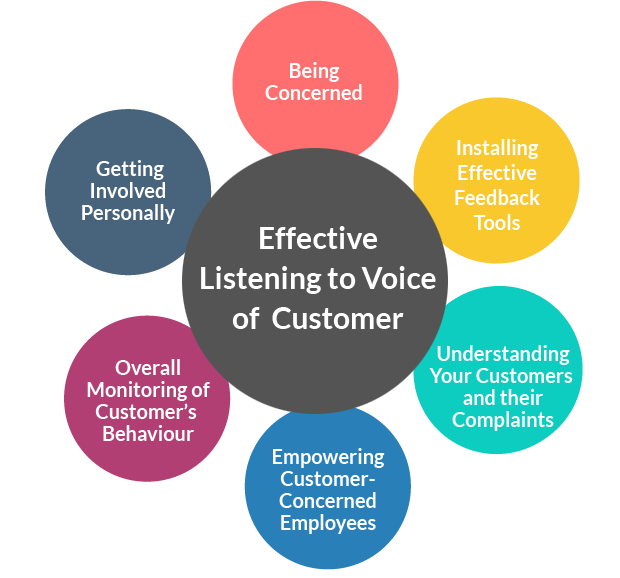If we don’t look ahead we risk being left in the dust, and perhaps nowhere is that risk greater than with the emergence of Artificial Intelligence (AI) as a practical retail technology. AI has left the lab, and although its long-range impacts and unexpected consequences remain the domain of science fiction writers, brands and retailers have seized upon it to predict individual consumer behavior and laser-target their messaging. Those who begin coupling AI with the human touch in the year to come will have a huge advantage long-term. As my 2019 trends that follow demonstrate, the technology gold rush will go unabated but savvy retailers will never lose focus on people.
Specialty Stores Thrive; Department Stores Surrender
Department stores have become damaged through perpetual deep discounting and their failures to motivate staff and excite consumers. All around us, once-dominant chains are shrinking and shuttering at a frightening pace, with venerable Sears and Toys R Us among the casualties. At the same time, specialty shops offering unique merchandise, highly trained (and well-compensated) sales associates, and irresistible services and spaces are booming. No retailer better exemplifies the trend—or its staying power—than Mitchells, a “luxury brands specialty store” that’s set the bar with its exceptional customer service; exquisite designer clothing, jewelry and accessories; and multi-generational relationships with designers and consumers. Jack Mitchell, CEO of the company his parents started in Westport, Connecticut, went on to write Hug Your Customers and, later, Hug Your People—titles that concisely sum up his retail recipe for success in a world of unlimited choice.
Consumers Spend As Channels Blend
Today’s customer is channel agnostic, switching effortlessly between online and bricks-and-mortar buying and employing a blend of shopping techniques: patronizing physical stores for tactile and social experiences, conducting product/pricing research via smartphone, and taking advantage of super-convenient online ordering and delivery options. “We don’t hear customers talk about channels very much,” James Nordstrom, president ofNordstrom Stores, told Diginomica. “Customers value experiences, and so the more successful we are in creating a great shopping experience, no matter how they’re choosing to shop, I think the better our business will be.” To exploit the trend, make your customer’s experience a good one no matter where he shops you.
The Circular Economy Expands, Retailers Go Sustainable, and Customers Approve
Serving the goal of sustainability, a circular economy is a regenerative human-managed system in which waste is minimized by slowing or closing energy and material loops. The economic model embraces durability, reuse, repurposing, refurbishing, recycling, and upcycling, and is being embraced by a growing cohort of environmentally-friendly merchants and manufacturers. Companies such as Unilever, Patagonia, IKEA, Lush Cosmetics, and New Belgium Brewing not only have the distinction of executives who can sleep at night, but legions of loyal, educated and affluent customers who reward environmental leadership at the cash register and like to tell their friends about it. Take Patagonia, the cultish outdoor clothing chain that has championed Earth-friendly practices and policies for over 30 years. The retailer’s Worn Wear program provides generous merchandise credits for returned Patagonia clothing in good condition. The returns are sorted into three categories: “Rewear” for clothes suitable for second-hand sale; “Reuse” for well-worn items to be turned into other products; and “Recycle,” which converts everything else to textile fibers and industrial products such as insulation. According to CEO Rose Marcario, Patagonia “wants everyone to become radical environmentalists by keeping our stuff in use longer.” Retailers with their eyes open won’t need a degree in climate science to know which way the wind blows.
Members-Only E-Commerce Becomes More Personalized
Amazon is far from the only retailer that’s innovating in e-commerce. Walmart describes Jetblack—a service launched from the retail giant’s tech incubator “Store No. 8” (not really a store) earlier this year—as “a new shopping service that combines the convenience of e-commerce with the customized attention of a personal assistant.” More pricey than Amazon Prime ($50 monthly for Jetblack vs. $12.99/mo. for Prime), the service is going after an upscale, busy clientele including “time-strapped urban parents.” A member simply texts her shopping request and Jetblack goes to work, delivering the appropriate merchandise within two business days—just 24 hours for popular items—at no additional charge. The launch publicity stresses an entrepreneurial, team-oriented approach to the question, “What if we doubled down on the customer experience and leveraged emerging technologies to build the most effortless, customized, and curated shopping experience possible?” The underlying system reportedly combines the skill and knowledge of expert human buyers with the speed and precision of AI and aims high to satisfy the unique needs of each member customer. If it flies, and it should, we’ll be hearing a lot more about this and other hyper-personalized services to follow.
Cashier-Less Checkout Expands Rapidly
As Amazon expands its Amazon Go chain of self-service convenience stores, dozens of startups are competing with established firms to master and lead this potentially game-changing retail model. An innovative Chinese entrant, BingoBox, has taken the cashier-less concept to another level, automating virtually every aspect of store operations in more than 300 unmanned outlets. BingoBox stocks snacks, beer, and just about any essential food or household item you might need in a pinch when other stores are closed. Shoppers scan a QR code to gain entry and pay for their purchases via mobile app. Other checkout-free startups include Zippin, with a recently opened concept store in San Francisco, Inokyo in Mountain View, and Santa Clara’s AiFi, which promises an affordable, flexible system for mom-and-pop stores and larger retail operations alike. This is an important trend that many of us will want to watch, but here’s the million-dollar question: Will automation that eliminates human staff find a home across the broad retail spectrum, or be consigned to the convenience store market where today’s innovation is occurring?
Retail Metrics Shift from Store Sales to Various Touch Points
While the same-store sales metric has long served as a baseline indicator of retail success, a number of industry analysts are questioning whether the metric is appropriate to measure modern retailing, according to recent reporting in RetailWire and Retail TouchPoints. Stores don’t always serve the same function that they did in the past, when they had one job—to complete the sale. Today’s stores have taken on a number of new roles, including marketing to boost brand awareness. That may mean the store no longer carries and sells products; that it has become an experiential destination center, showroom, and/or distribution center. Clearly, when sales are frequently completed in a channel other than the store, judging performance based on sales numbers alone is misguided. This is a reality that Wall Street investors and shareholders are learning to accept as retailers convert their stores into something new.
AI Becomes A Valuable Tool to Personalize Service
Retailers are using AI to personalize customer service, and the trend is picking up steam. Fifty-five percent of retailers plan to leverage the technology within three years, according to the 2018 Customer Experience/Unified Commerce Survey from Boston Retail Partners (BRP). Among the many applications: merchandise recommendations based on a customer’s response to a short survey, and the ability to contact a given client at the most favorable time of day. In April, Starbucks rolled out voice recognition ordering in South Korea, extending its mobile order-and-pay technology by integrating with Samsung’s AI chatbot, Bixby. Customers can use their phone in a conversational way—as if speaking with a real-life barista—to learn more about available beverages. Meantime, The North Face has adopted IBM Watson’s cognitive computing technology to help consumers find just the right jacket. But here’s the thing. While AI implementations will permit innovative businesses of all kinds to increase client satisfaction, Starbucks and The North Face know full well—as any customer-centric organization should—that connections made between two people will always trump “equipment” no matter how many bells and whistles are thrown in.
Mall Brands Enter the Subscription Service Rental Market
Ann Taylor and Express are notable among the fashion retailers that offer rental subscription services—an innovation that helps to offset reduced in-store traffic and create a new revenue stream. With Ann Taylor’s Infinite Style program, for $95/month subscribers receive up to nine garments every four weeks. “Wear it. Send it back. Get more. Exchange as many times as you like with free shipping, both ways.” Meantime, Express Style Trial works on a set-of-three basis and looks attractive at a flat monthly cost of $69.95. “This service allows our closet to become your closet. Start closeting items by browsing our site and viewing everything Express Style Trial has to offer. Check out New Arrivals for new styles each week.” In addition to helping clothing retailers maximize their inventories, affordable monthly rental programs such as these hold particular appeal for younger customers who may not have otherwise recognized the brand. Now it’s something they’ll want to talk about. According to Allied Market Research, the online clothing market rental market will exceed $1.8 billion by 2023.
In recent years, retailers have increasingly overlooked employees as their most important competitive differentiator, instead focusing on technology solutions that promise to reduce overhead and automate every conceivable aspect of the business. AI is a remarkable tool with capabilities we’ve only just begun to unleash, but as an executive obsession I fear it will further devalue our people. As enthusiasm for AI, unmanned stores, and ingenious self-service options swells in 2019, remember that when (not if) the machines drop the ball, customers will be most grateful for the human being in the room.
And consider the philosophy of MM.LaFleur as articulated by Rachel Mann, director of offline retail, when she said, “for us it’s all about the human experience—a refuge from Alexa and all of the choice and robots … it should be like you’re meeting your friend and she’s giving you good advice.” Now that’s a trend you can bank on.









